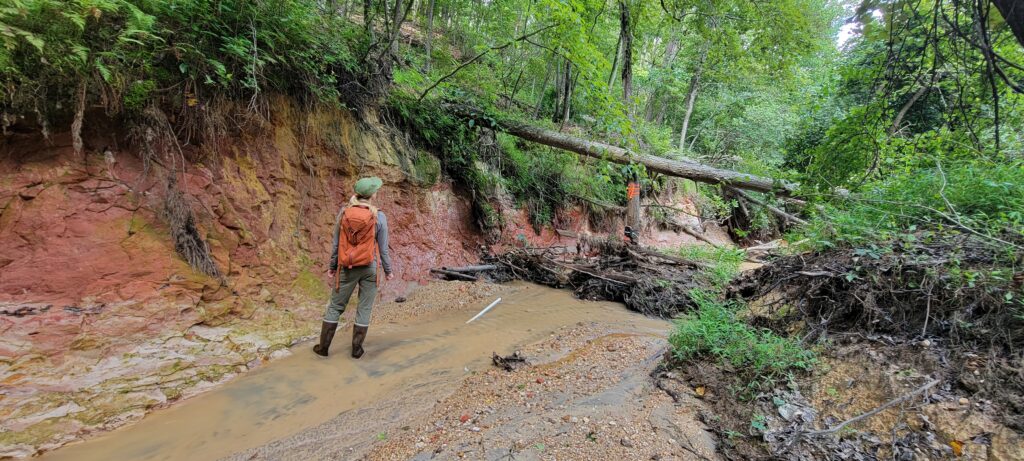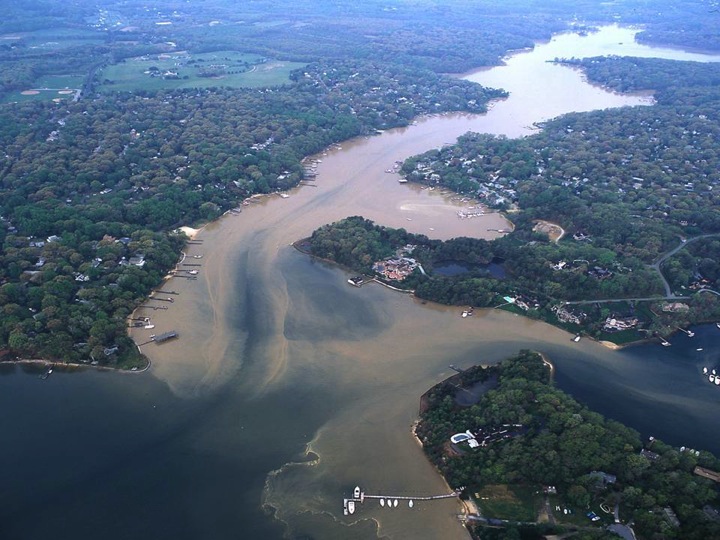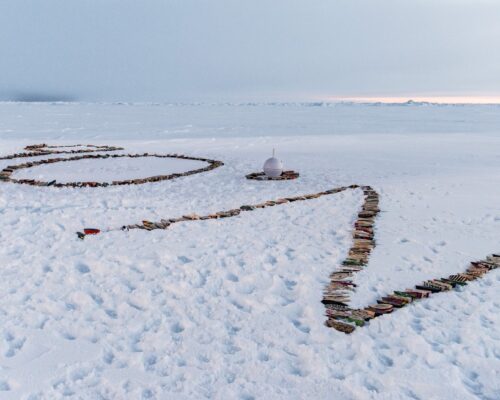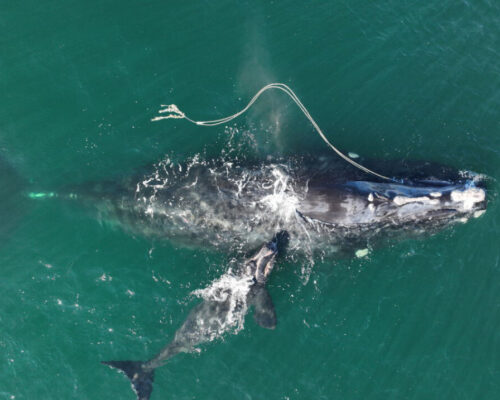A badly-needed restoration project at the headwaters of the Chesapeake Bay will be completed this fall thanks to $8 million in grant funding.
The Jabez Branch, a key Sever River tributary, has a significant erosion and pollution problem that has sent significant sediment plumes into the river—in a spot that was once one of the largest spawning sites for perch in the whole Chesapeake Bay.
The area known as Reach III of the Jabez Branch has large sections of destabilized coastal plain. The sections are washing downstream with each rain event, bringing with them sediment, debris and runoff pollution from roadways.
The problem stems from centuries of agriculture that caused sediment to settle downstream, then the arrival of paved surfaces and development caused runoff that cut into the banks. Now, the deeply incised channel is 10 feet deep or more in places.

“It is a completely broken system,” says Fred Kelly, Executive Director of the Severn Riverkeeper Program. The banks are eroding, the wetlands are drying out, the ecosystem is dying.”
10 years ago, the Severn River Commission flagged the Severn Run Environmental Area valley, of which Jabez Branch is a part, as a source of sediment, debris, trash and chemicals going into the Severn Run.
Now, Anne Arundel County, the Maryland Department of Natural Resources (DNR) and the Severn Riverkeeper are partnering to fill the deep channel with native sand, gravel and wood chips, adding a series of riffles and pools in the channel to slow water flow and help withstand big storms. They will also double the size of the existing 2.6 acres of wetlands bordering the stream.
“These are the types of comprehensive projects and partnerships that the Department of Natural Resources is promoting to update our overall Chesapeake Bay cleanup strategy,” said DNR Secretary Josh Kurtz. “We’re embracing the lessons we’ve learned over the past 40 years and adapting our strategy to reflect the latest science. As rising sea levels and stronger storms due to climate change threaten Maryland, we must invest in more impactful projects such as this one.”
-Meg Walburn Viviano




